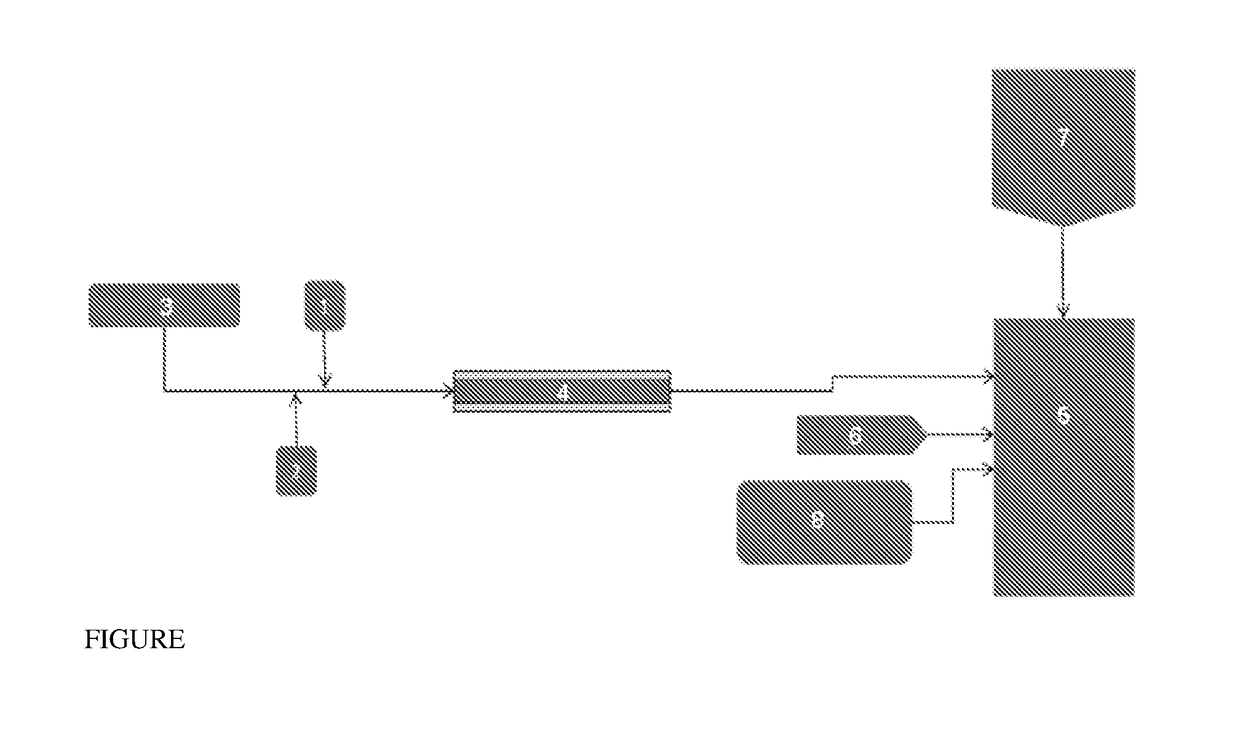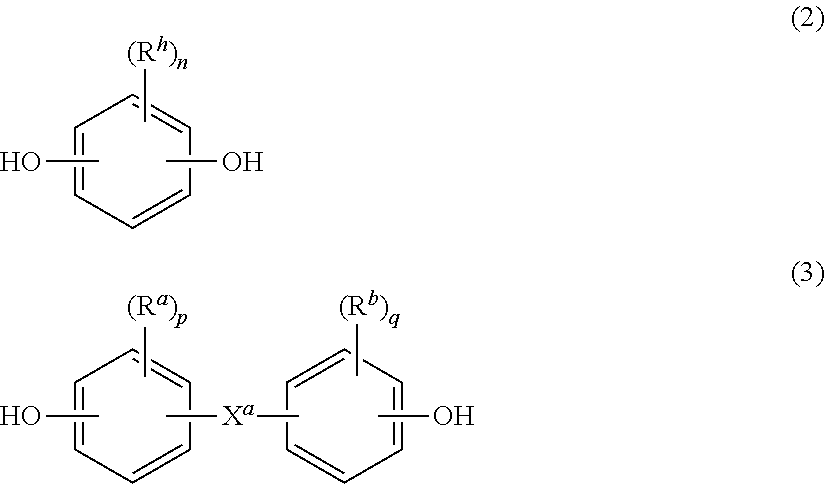Process for preparing poly(ester-carbonate)s and poly(ester-carbonate)s prepared thereby
- Summary
- Abstract
- Description
- Claims
- Application Information
AI Technical Summary
Benefits of technology
Problems solved by technology
Method used
Image
Examples
example 1
[0050]A 7 wt % sebacic acid (SBA) solution was prepared by dissolving 27 kg of dry SBA powder in 65 kg of 33 wt % aqueous sodium hydroxide (NaOH) solution, and 249 kg of deionized (DI) water. Phosgene at a rate of 1 kg / min was dissolved in dichloromethane at a rate of 5 kg / min, and fed to the jacketed tubular reactor where it contacted SBA solution fed at the rate of 5.9 kg / min at the reactor entrance. The tubular reactor has an internal diameter of 1 inch and includes 4 elements that give a combined length of 108 inches. The outer diameter of the jacket of the tubular reactor is 2 inches. Chilled water having an average temperature of 1 to 5° C. flows in the tube jacket at the rate of about 253 liters per minute. The formulation tank mixture consisted of 86 kg of bisphenol A (BPA), 151 liters water, 416 liters dichloromethane (including the rinse), and 0.22 kg of 15% aqueous solution of sodium gluconate. The formulation tank contents were discharged to the reactor and 0.7 kilograms...
example 2
[0052]A 7 wt % sebacic acid (SBA) solution was prepared by dissolving 27 kg of dry SBA powder in 65 kg of 33 wt. % aqueous sodium hydroxide (NaOH) solution, and 294 kg of deionized (DI) water. Phosgene at a rate of 1 kg / min was dissolved in dichloromethane at a rate of 9 kg / min, and fed to the jacketed tubular reactor where it contacted SBA solution fed at the rate of 5.9 kg / min at the reactor entrance. The tubular reactor has an internal diameter of 1 inch and includes 4 elements that give a combined length of 108 inches. The outer diameter of the jacket of the tubular reactor is 2 inches. Chilled water having an average temperature of 1 to 5° C. flows in the tube jacket at the rate of about 254 liters per minute. The formulation tank mixture consisted of 86 kg of bisphenol A (BPA), 151 liters water, 416 gallons dichloromethane (including the rinse), and 0.22 pounds of 15% aqueous solution of sodium gluconate. The formulation tank contents were discharged to the reactor and 0.7 kil...
embodiment 1
[0057]A method of preparing a poly(ester-carbonate), the method comprising contacting an aqueous solution comprising a dicarboxylic acid with a first solution comprising phosgene and a first organic solvent in a tubular reactor to provide a first reaction mixture comprising the dicarboxylic acid, the corresponding diacid chloride, phosgene, or a combination comprising at least one of the foregoing; combining a dihydroxy aromatic compound, the corresponding dialkali metal salt of the dihydroxy aromatic compound, or a combination comprising at least one of the foregoing, water, and a second organic solvent to provide a second reaction mixture; introducing the first reaction mixture, the second reaction mixture, and a second solution comprising phosgene to a tank reactor, wherein the tank reactor has a first pH of 7 to 9, preferably 8 to 9, more preferably 8 to 8.5, to provide a third reaction mixture comprising the poly(ester-carbonate).
PUM
| Property | Measurement | Unit |
|---|---|---|
| Temperature | aaaaa | aaaaa |
| Temperature | aaaaa | aaaaa |
| Time | aaaaa | aaaaa |
Abstract
Description
Claims
Application Information
 Login to View More
Login to View More - R&D Engineer
- R&D Manager
- IP Professional
- Industry Leading Data Capabilities
- Powerful AI technology
- Patent DNA Extraction
Browse by: Latest US Patents, China's latest patents, Technical Efficacy Thesaurus, Application Domain, Technology Topic, Popular Technical Reports.
© 2024 PatSnap. All rights reserved.Legal|Privacy policy|Modern Slavery Act Transparency Statement|Sitemap|About US| Contact US: help@patsnap.com










